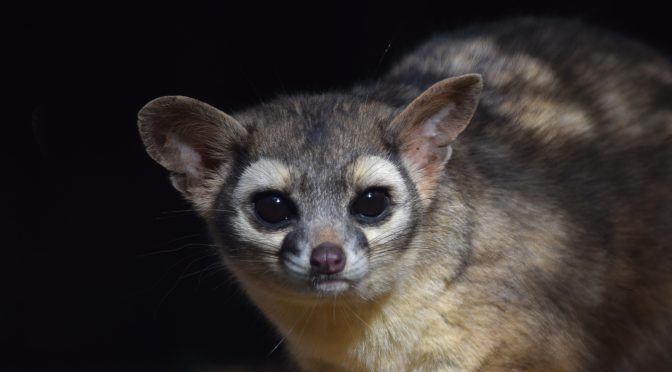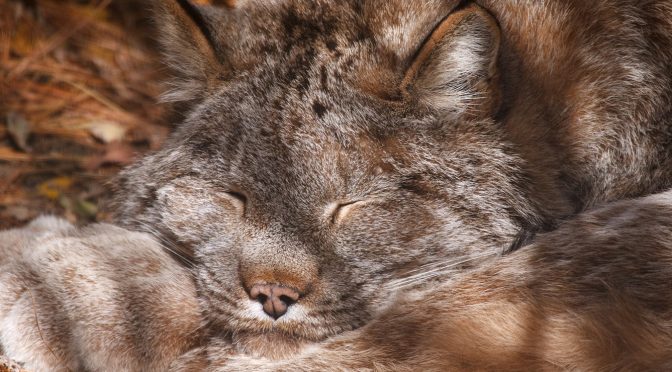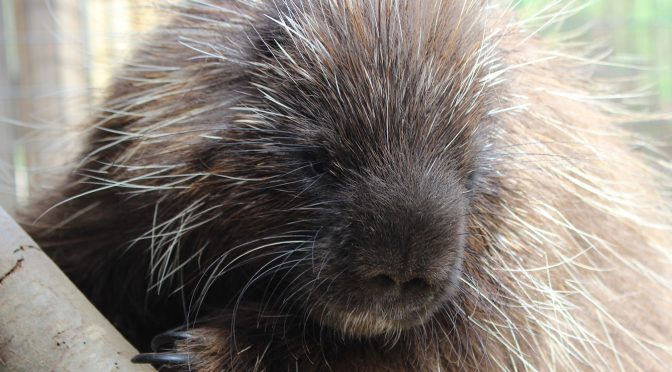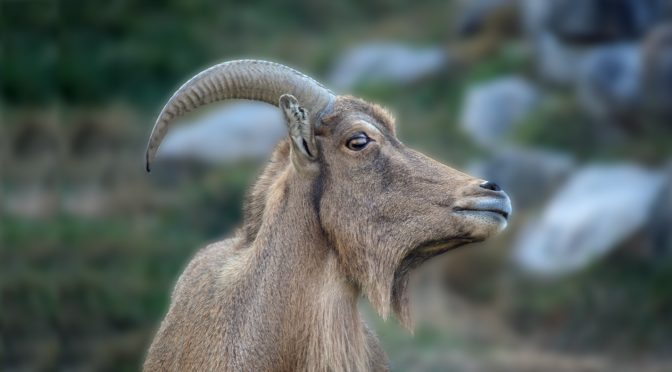Physical Description
Ringtails are an average of 12 to 18 inches long with a tail of about the same length, and they weigh less than 3 pounds. The body is buff to dark brown in color with white underparts and a long tail with alternating bands of black and white fur. Ringtails’ feet have short, straight, semi-retractable claws and opposable digits.
Predators
Common predators they may encounter include great horned owls, coyotes, bears, and bobcats. To defend themselves, ringtails will let out a high-pitched screech and emit a foul-smelling secretion from their anal glands to discourage predators.
Lifespan
In the wild, their average lifespan is 7 years, but in human care, they can live up to 14 years.
Reproduction
Ringtails are a more solitary species and generally only come together to mate from February to May. After a 51-54 day gestation period, the female will give birth to 1 to 4 cubs in a den like a rock crevice or tree hollow that they have lined with moss. Their young are born helpless and won’t even open their eyes until they are a month old. They will be weaned at about 10 weeks old and will reach maturity at about 10 months old.
Fun Facts
- Their tails lack prehensile ability, which would allow them to grip trees like other primates. They use them for balance.
- Even though they have been called “ring-tail cats, civet cats, and miner’s cats,” they are not actually cats; they are a member of the raccoon family.
Conservation Messaging
Ringtails are considered a species of least concern according to the IUCN Red List. Sometimes, they are viewed as pests by farmers because they can damage orchards and hunt poultry.
But since Ringtails are skittish by nature and will retreat if people are near, they are not a threat to humans. Even the most pesky animals play an important role in their ecosystems so it’s best to try and coexist with them!










